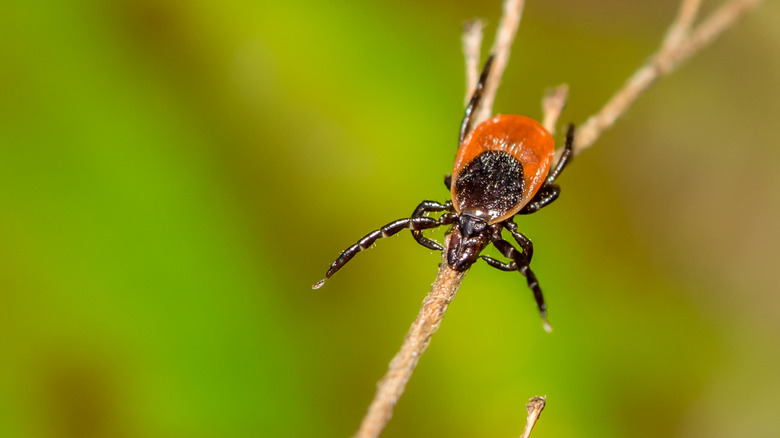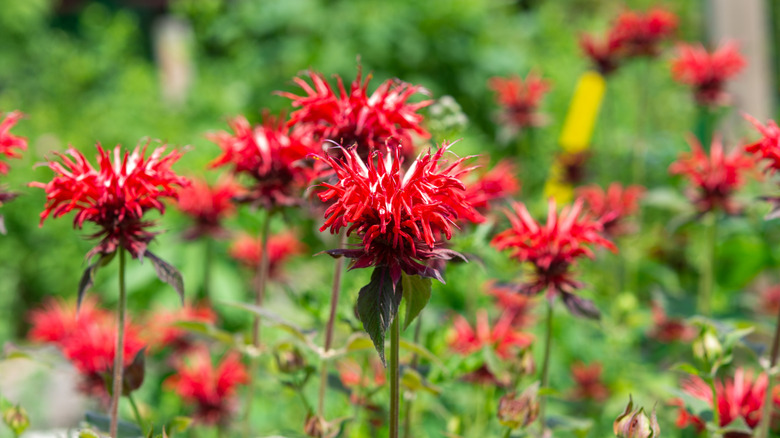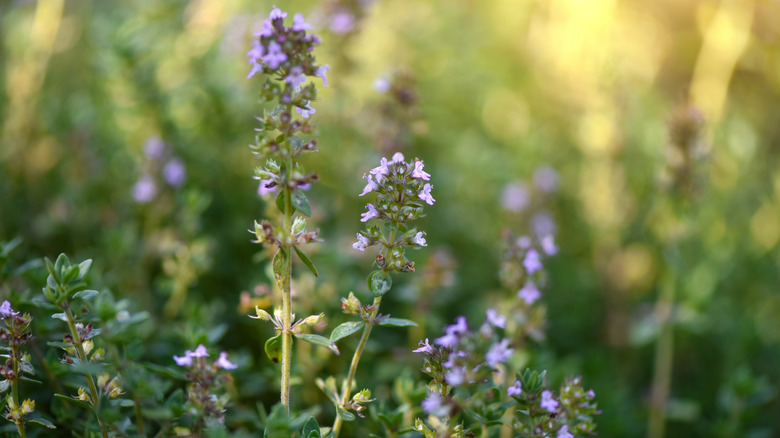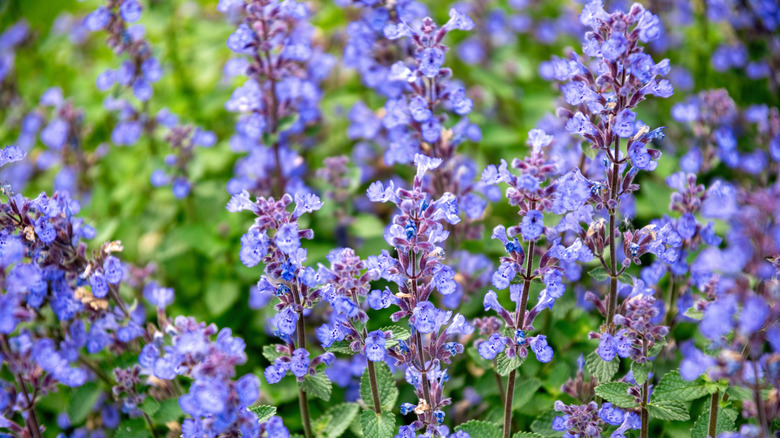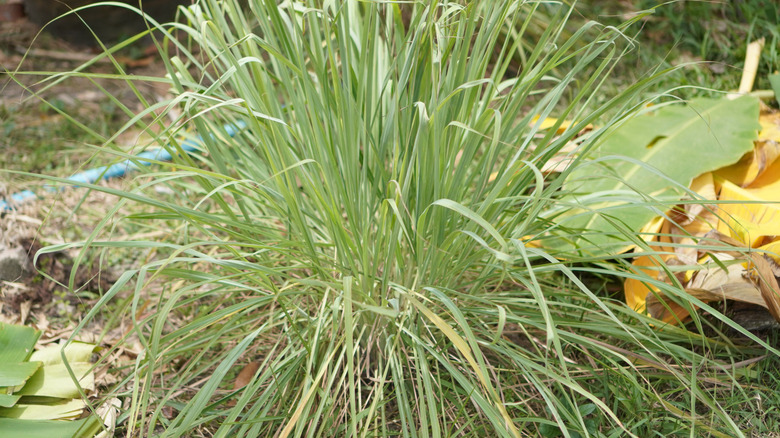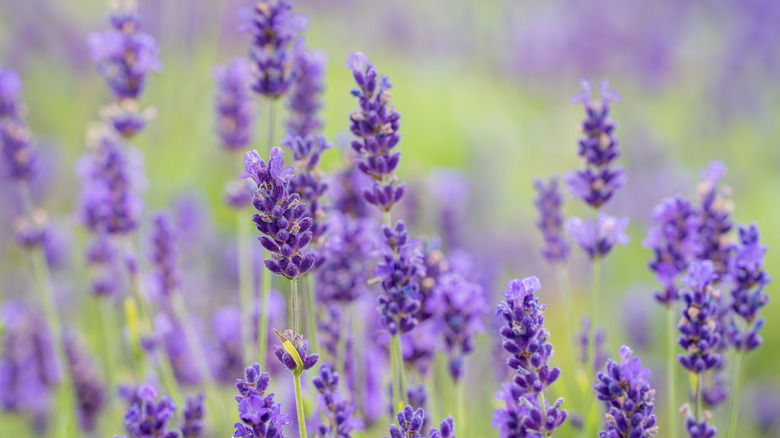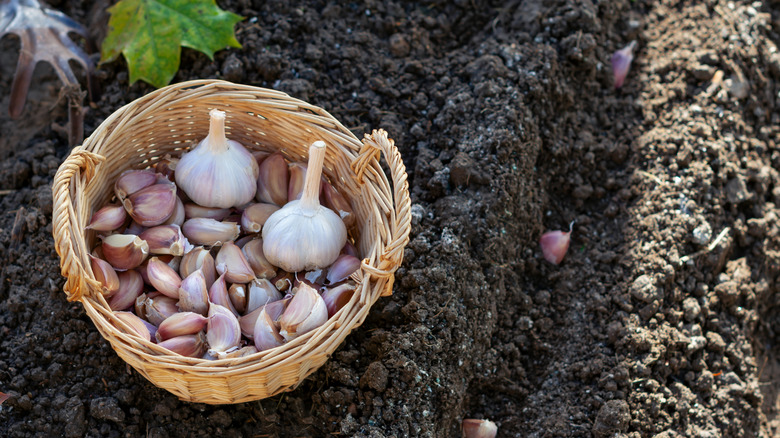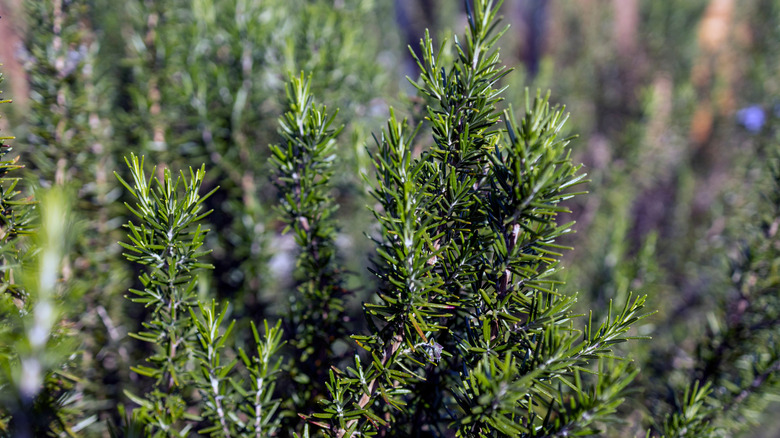Keep Ticks At Bay With 7 Garden Plants They Hate Going Near
Beyond being merely unpleasant to remove and, well, gross (and they certainly are that!) — ticks can transmit a variety of diseases, depending on your location. The blacklegged or deer tick (Ixodes scapularis), notorious for transmitting the bacteria that causes Lyme disease, can be found across the eastern U.S. Southwestern populations of the brown dog tick (Rhipicephalus sanguineus) can spread Rocky Mountain spotted fever, while the southeastern U.S.-dwelling lone star tick (Amblyomma americanum) can transmit Bourbon virus and tularemia.
There are a number of techniques you might employ in landscaping your yard that can reduce your risk of encountering harmful ticks while enjoying the outdoors. Eliminating tall grass, brush, and leaf litter where ticks might hide is a good practice, as is creating a barrier of woodchips or some other ground cover between your yard and any wooded areas. Tick prevention can even extend to your garden — there are some plants that keep ticks away, such as rosemary, lemongrass, and garlic. In addition to possibly repelling ticks on their own, some plant choices might drive away animals that are common tick carriers, especially deer and rodents.
Bee balm
In addition to being a vibrant and fragrant garden addition, bee balm (Monarda didyma) — hardy in USDA Zones 4 through 9 — can pack a one-two punch for tick prevention. It generally isn't appealing to deer and rabbits, two notorious tick carriers. Additionally, it contains thymol, a natural antiseptic that is used in mouthwash. Thymol has potential acaricidal (mite- and tick-killing) properties and may, in high concentrations, prevent tick eggs from hatching or kill larval ticks. On top of all that, bee balm is highly attractive to pollinators, so you can enjoy an increase of butterfly and hummingbird activity.
Thyme
As you might be able to extrapolate from the name, thyme is also a source of the acaricidal compound thymol. Thyme's fragrant leaves are unappetizing to deer — especially valuable when you consider that white-tailed deer are the primary hosts for adult blacklegged ticks. You might even try using thyme as a mosquito repellent. Thyme is considered hardy in zones 5 through 9. If you're of a culinary bent, you can use the leaves fresh or dry them. Of Mediterranean origins, thyme is drought resistant and ideal for rocky, dry areas in full sun.
Catnip
Although beloved by cats, catnip (Nepeta cataria) has pretty much the opposite effect on ticks. In fact, nepetalactone, the chemical in catnip that drives cats wild, purportedly demonstrates tick-repellent properties on par with DEET. Appropriate for full sun or part shade applications in zones 3 through 7, catnip's showy white and purple blooms are attractive to bees, butterflies, and many other pollinators while being unappetizing to deer. Remember that catnip can be an aggressive spreader and is considered invasive in some areas — make sure it isn't a nuisance in your state and cut off any flowers to reduce reseeding.
Lemongrass
Ticks are mostly blind and rely on their ability to detect butyric acid — a chemical found in mammalian sweat — to find potential hosts. Lemongrass (Cymbopogon citratus), a common ingredient in South Asian cuisines, is a fragrant plant with naturally occurring oils that interfere with ticks' ability to respond to butyric acid. In other words, it's too smelly and might put ticks off their appetites! Hardy in zones 8 through 11, lemongrass can be grown in containers or in a garden in full sun. However, it can be toxic to dogs, cats, and horses if ingested in large quantities.
Lavender
Lovely, fragrant, and useful in homecrafts and culinary applications, English lavender may also have tick-deterrent properties. You could use lavender oil as a tick repellent or rely on the strong scent of the plant itself to drive off unwanted pests. Generally, rabbits and deer will leave lavender alone too, reducing the chance that browsing herbivores will introduce ticks to your garden. Grow this purple-blooming herb in full sun or part shade in zones 5 through 9. If your dogs or cats tend to munch on plants, make sure they leave your lavender alone or risk stomach upset.
Garlic
Another strongly scented plant, garlic — especially concentrated extracts and sprays — has been explored and shown promise in studies as a tick repellent. Like ticks, herbivores such as deer generally find the powerful odor and flavor unpleasant, as well. Suited to zones 4 through 9, garlic's fragrant, spicy bulbs are heavy hitters in the kitchen, so it's a great choice for an edible garden. A full sun lover, garlic favors well-draining, loose soils. Separate all the cloves from the bulb before planting them individually, and make sure to plant them with the "pointy" side up.
Rosemary
Certain chemicals found in the strong-smelling essential oils produced by rosemary are believed to have tick-repellent properties. Some people swear by applying rosemary oil topically to skin and clothing as a form of personal tick repellent, as well. Beyond applications in tick management, rosemary leaves and oils are also noted for their tendency to deter mosquitos, making them a potential pest control double whammy. Grow this shrubby herb in zones 8 through 10 in full sun; in colder areas, you can grow rosemary in containers and bring it indoors to keep it safe from the chill of winter.
